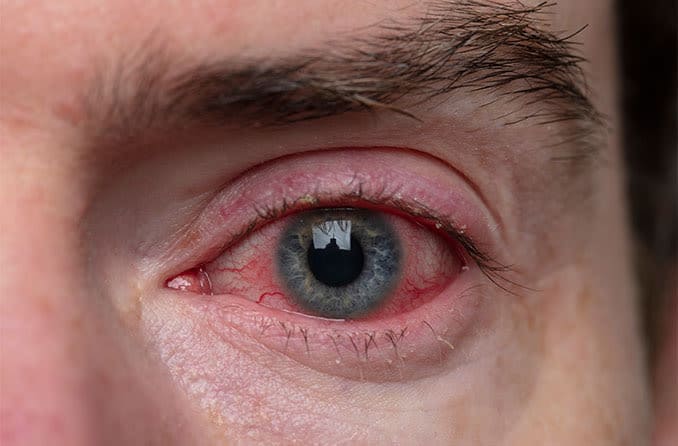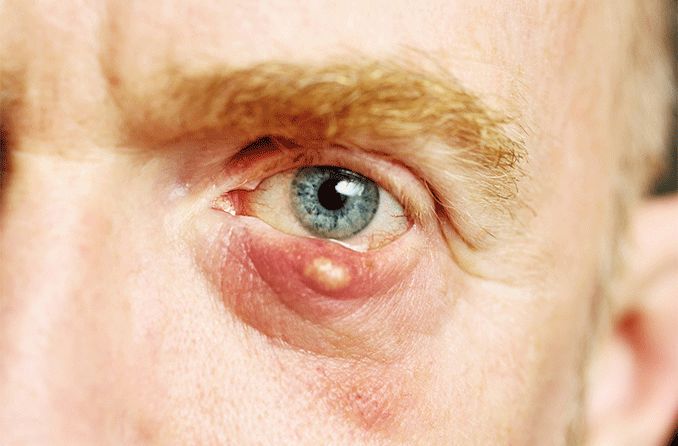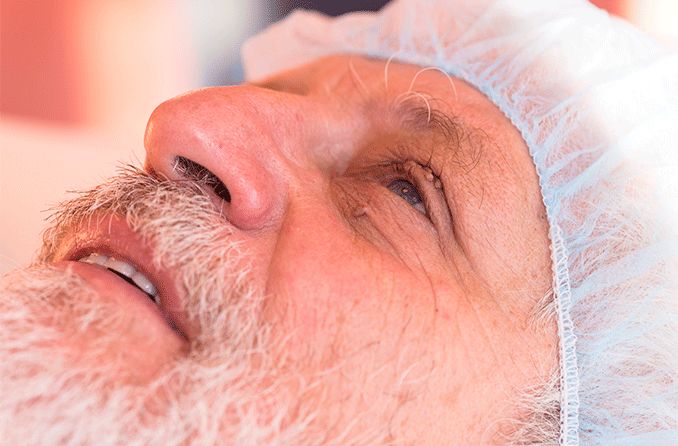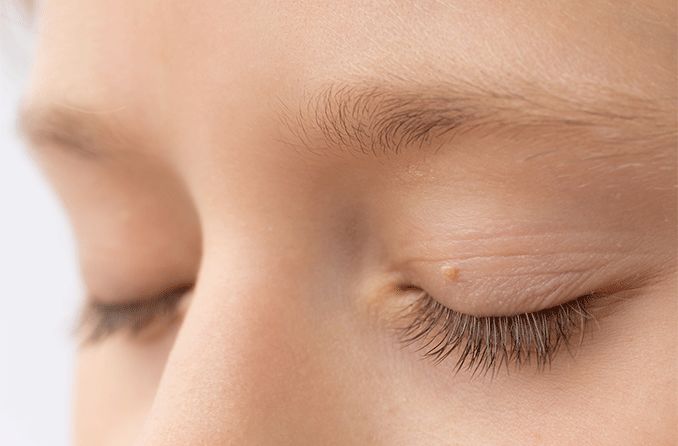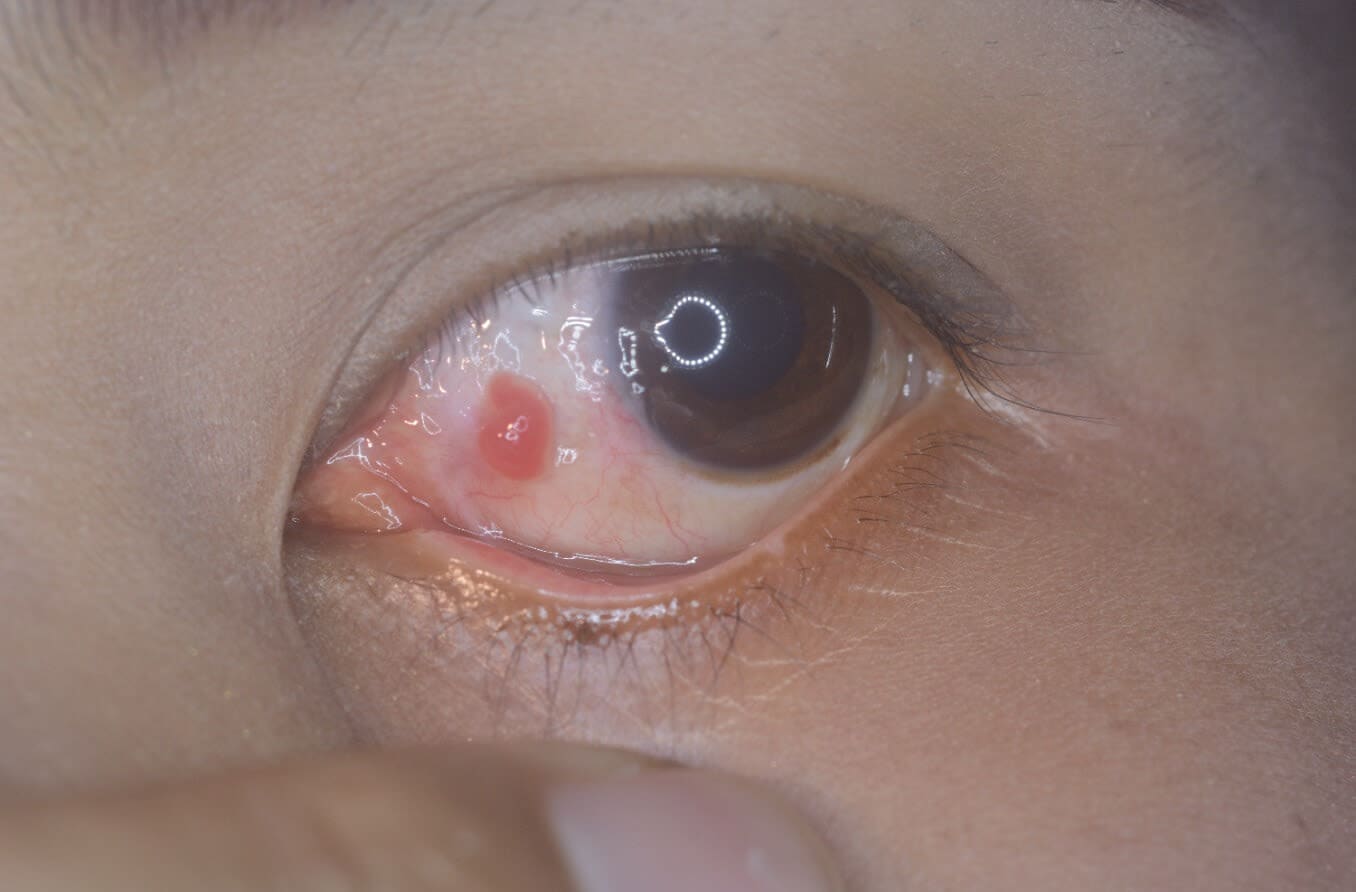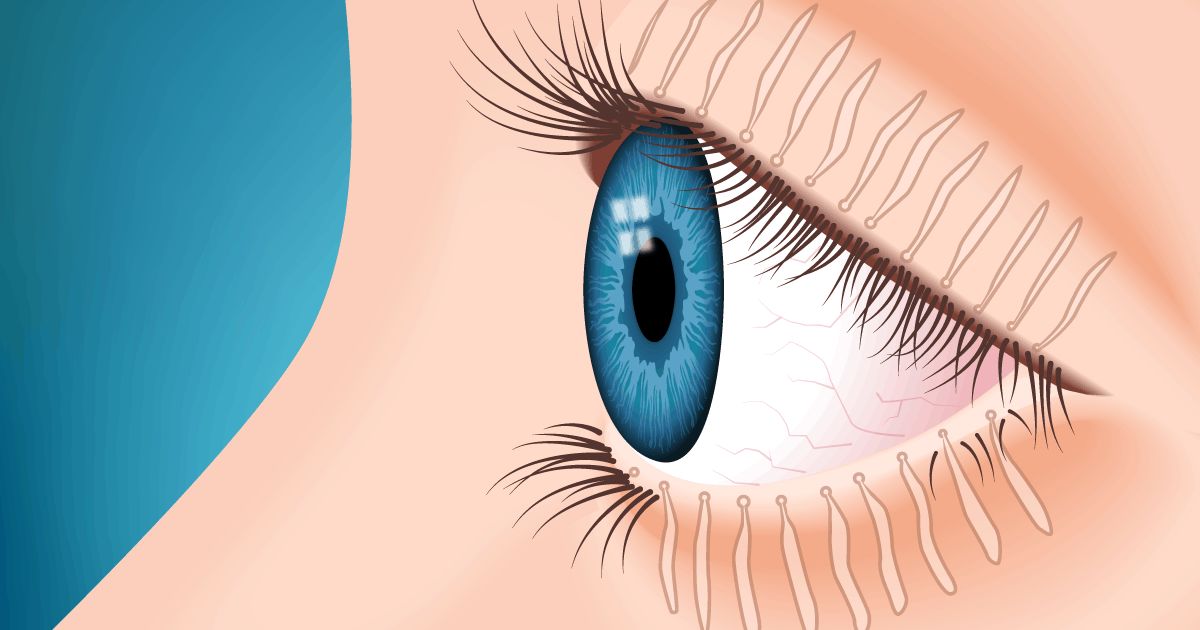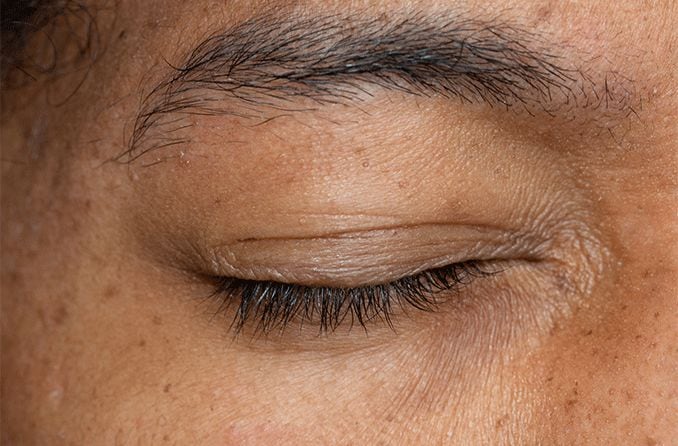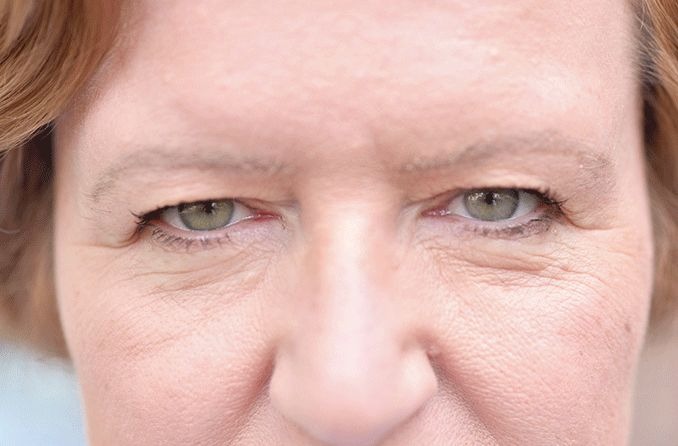What are syringomas?
Syringomas are sweat glands that have developed into small growths on the skin. They typically appear in clusters as pink, yellow or brown bumps. They are benign (not harmful). Syringomas develop most commonly around the eyes and neck. They can also appear on the armpits, genitalia and abdomen.
Syringomas aren’t typically associated with other symptoms. However, sweating may cause itchy skin (pruritus) at the site of syringomas in some individuals.
What causes syringomas?
When sweat glands (eccrine glands) grow too much, they become syringomas. Sweat glands are responsible for cooling the body down when it is hot by producing sweat. But if they work too much, they may grow more cells than necessary.
A few things that can cause sweat glands to overwork include:
Stress
Exercise
High temperatures
Genetics
Certain medical conditions
Around 1% of the general population are likely to develop syringomas.
What are the kinds of syringomas?
There are four kinds of syringomas. All are benign (not harmful).
Localized syringomas
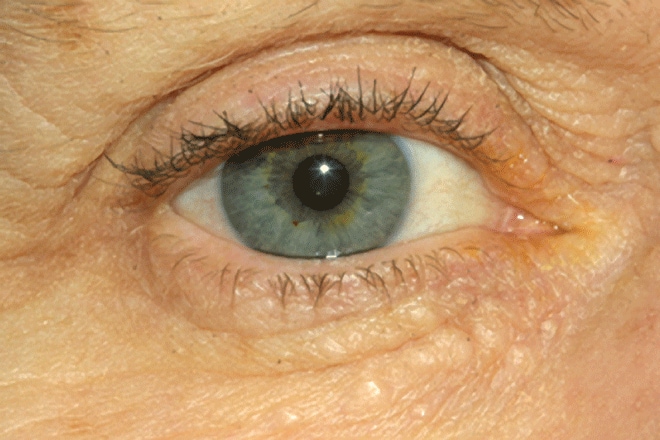
[Image credit: Syringoma . Permission granted by © 2022 American Academy of Ophthalmology]
This is the most common form of syringoma. Localized syringomas only develop on one particular area of the body, usually around the eyes, genitalia or armpits. These syringomas are not associated with any medical conditions.
Down syndrome syringomas
Down syndrome is a genetic condition. Most people are born with two of each chromosome — one copy from each parent. Chromosomes carry pieces of DNA, which determine how the body develops. Babies born with Down syndrome have one extra chromosome. This additional chromosome impacts how the child grows and develops, physically and mentally.
It’s estimated that around 20% of individuals with Down syndrome experience syringomas. These syringomas are mostly located around the eyes and eyelids. Some research indicates that these may be more common in adult females with Down syndrome.
Generalized or eruptive syringomas
Eruptive syringomas were first described in 1887. They are a rare type that typically appear around puberty. Unlike localized syringomas, they can appear on multiple areas of the body. Most often, eruptive syringomas develop on the neck, chest, armpits, abdomen and area surrounding the belly button. They tend to appear in a symmetrical pattern.
Females are more likely to develop eruptive syringomas. They may resolve on their own but if they don’t, the only treatment available is cosmetic.
Familial syringomas
In very rare cases, a tendency to develop syringomas can be passed from parent to child. In these cases, the child’s sweat glands will be genetically programmed to overwork. Familial syringomas are a type of eruptive syringoma but typically form on the face rather than the torso.
Who gets syringomas?
Anyone can develop syringomas. However:
They are more common in females, particularly those of Japanese descent.
Fair-skinned individuals are more likely to develop localized syringomas.
Those with darker skin are more likely to develop eruptive syringomas.
Syringomas develop most frequently during puberty or between the ages of 40 to 60.
How are syringomas diagnosed?
A doctor will initially look at the physical appearance of the bumps. If they suspect syringomas, they may then perform a biopsy to rule out other possible conditions. To perform the biopsy, the doctor will numb the skin and cut off a small portion. A specialist will then examine the removed skin with a microscope. If the sweat glands are shaped like commas, the specialist can confirm the diagnosis of syringomas.
What else looks like syringomas?
In addition to syringomas, there are a few other conditions that can cause skin abnormalities on and around the eyelids. These include:
Milia
Milia are small cysts on the skin filled with keratin. A cyst is a pocket of tissue that can contain fluid, air, pus or other substances. Keratin is a protein that helps form the outer layer of skin. It can also be found in hair, nails, and the lining of organs and glands.
Like syringomas, they appear as small bumps on the face, chest, arms and genitals. Milia are typically white as opposed to the yellow or skin-colored syringomas. Milia are most commonly found on the skin of newborns but have been known to appear on children and adults.
Eyelid skin tags
Skin tags , also known as acrochordons, are a kind of eyelid papilloma . Papillomas are small, non-cancerous tumors that grow on the eyelids. Skin tags are small, skin-colored growths that develop around areas of folded skin.
They are much more common than syringomas, impacting around 25% of the population. They frequently develop around the neck, groin, armpits and eyelids. Skin tags are made up of collagen and blood vessels. Collagen is a protein found throughout the body that helps hold the body’s cells together.
Skin tags typically start as small bumps but can grow to a raised stalk. Like syringomas, they are harmless. They may rub off on their own but a dermatologist can help remove them.
Acneiform eruptions
Acneiform eruptions are a set of disorders that cause pustules — bumps on the skin that contain pus. These bumps are similar to acne. However, unlike acne, there are no blackheads or whiteheads. Acneiform eruptions pop up suddenly and can affect individuals of any age.
Several things can cause acneiform eruptions, including:
Infections
Genetic conditions
Reactions to medications
Hormones
Metabolic abnormalities
Contact with certain chemicals
Like syringomas, these eruptions can happen in different areas of the body. However, acneiform eruptions are most commonly found on the chest and back.
Basal cell carcinoma
Basal cell carcinoma is a kind of skin cancer that typically appears on areas of the body that are frequently exposed to sunlight. Like syringomas, they often develop on the head and neck. The appearance of basal cell carcinomas can vary.
They may appear as:
A shiny, transparent bump
A lesion with brown, black or blue spots
A flat patch with scales and raised edges
A scar-like lesion
Unlike syringomas, basal cell carcinoma can be dangerous. It is important to seek medical attention if you notice any new growths on your skin.
Molluscum contagiosum
Molluscum contagiosum is a common skin infection that causes painless bumps on the skin. The infection, which stems from a virus, is most commonly found in children. The bumps associated with the infection are typically round and firm. Their size may range between that of a pinhead and that of a pencil eraser.
Like syringomas, the bumps frequently appear on the face, arms, legs and torso. If molluscum contagiosum appears on the eyelids, it can lead to conjunctivitis (pink eye) .
The virus that causes this infection spreads easily. It can pass through contact with infected skin or objects, or sexual contact with an infected individual. See a doctor if you suspect you or your child may have developed molluscum contagiosum.
Angiofibroma
Angiofibromas are non-cancerous tumors that typically appear as small red bumps around the nose and cheeks. The bumps are usually shaped like domes but, on rare occasions, may be attached by stem-like stalks.
They are most commonly caused by genetic conditions, such as:
Tuberous sclerosis
Multiple endocrine neoplasia type 1
Birt-Hogg-Dube syndrome
Angiofibromas may develop as a single lesion or as a cluster. Like syringomas, angiofibromas are frequently asymptomatic and do not require treatment.
Other similar-looking conditions
Additional conditions that can appear similar to syringomas are:
Sebaceous hyperplasia – A harmless condition that causes sebaceous glands, which produce oil that protects the skin, to swell and form bumps.
Eccrine hidrocystoma – A harmless tumor that usually appears on sweat glands near the eyelid.
Eruptive xanthoma – A rare condition that causes yellow-red bumps to form on the skin. It is caused by an excessive amount of fatty acids in the blood.
Colloid milium – A rare condition that causes dome-shaped red or skin-colored bumps on areas frequently exposed to light.
Trichoepithelioma – A rare, harmless skin growth that develops from hair follicles.
How are syringomas treated?
Syringomas are not dangerous and can be left alone. However, if there are cosmetic concerns, there are some methods your provider can use to remove them. It is important to be aware that some of these methods may cause scarring.
Treatment options include:
Cauterization – This method burns the syringomas with an electric needle to remove them.
Excision – This involves the use of a scalpel, scissors or razor to cut the syringomas off.
Cryosurgery – This involves the use of liquid nitrogen to freeze the syringomas.
Dermabrasion – This method involves scraping off the top layer of skin.
Laser therapy – This method uses beams of light to reduce the appearance of syringomas.
Diathermy – This involves the use of electric currents to build heat beneath the skin and reduce blemishes.
There are also certain medications that can help combat syringomas. These include:
Trichloroacetic acid – This medication is topical (applied to the skin) to treat acne. It can also help reduce the appearance of syringomas.
Isotretinoin – This medication is oral (taken by mouth) and used to treat cystic acne. It can also help reduce the appearance of syringomas.
Acitretin – This medication is oral and used to treat psoriasis. It can also help reduce the appearance of syringomas.
These treatment options are usually successful. However, there is a likelihood that syringomas will reappear. If this happens, it is safe to treat them again.
It is also considered generally safe to use makeup to cover the appearance of syringomas.
When should you see a doctor?
If you notice pain around your syringomas or they appear widely across your body, it is a good idea to seek medical help. Follow up with your health care provider if a treated area is not healing or is oozing a yellowish liquid. This is often a sign of infection and will need to be addressed.
READ Next: What causes eyelid bumps, and are they a health risk?

